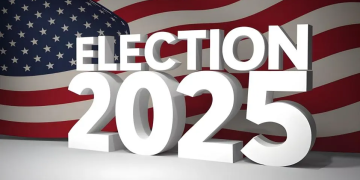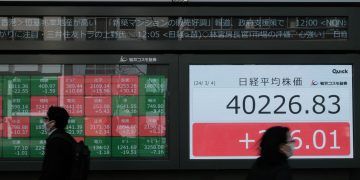The Debt Ceiling Crisis: A Recurring Threat
The United States’ debt ceiling, a limit set by Congress on how much the federal government is allowed to borrow, has become a recurring point of contention in U.S. politics. While raising the debt ceiling is usually a routine process, political disagreements and brinkmanship have often led to standoffs that generate uncertainty in the financial markets. With the debt ceiling debate looming once again, many investors are wondering how the latest round of negotiations will impact U.S. markets and the global economy.
A default scare surrounding the debt ceiling could have serious economic implications, not only for the U.S. but for global markets. The question is, how will this episode differ from the previous ones, and what will it mean for Treasuries, the volatility index (VIX), and risk assets like stocks and corporate bonds? This article takes a deep dive into these questions, exploring the potential outcomes and risks that investors should be aware of as the debt ceiling crisis unfolds.
Understanding the Debt Ceiling Drama
The debt ceiling is a statutory limit that caps the amount of money the U.S. government can borrow. Once the government reaches this ceiling, it cannot borrow further unless the ceiling is raised or suspended by Congress. If the debt ceiling is not raised or suspended in a timely manner, the U.S. could face the prospect of defaulting on its debt obligations. Such a scenario would trigger a massive economic and financial crisis, as the U.S. Treasury would be unable to meet its obligations to bondholders, pay federal workers, or fund essential programs.
In the past, these standoffs have often been accompanied by political theater, with Republicans and Democrats using the debt ceiling as leverage to push for fiscal reforms or spending cuts. While previous crises have ended with last-minute deals to raise the ceiling, the longer these debates last, the greater the uncertainty becomes in financial markets.
The question on investors’ minds this time is whether a solution will come in time and whether a potential default scare will trigger the same kind of market volatility and economic repercussions seen in past episodes. A default by the U.S. government would undoubtedly have serious consequences for global markets, given the prominence of U.S. Treasuries in the global financial system.

Economic Implications of a Default Scare
The economic fallout from a default scare can be far-reaching. Even the mere threat of a U.S. default can lead to a series of negative consequences, including rising borrowing costs, diminished confidence in U.S. assets, and a significant slowdown in economic activity. Here are some of the key economic implications that investors should consider:
- Rising Borrowing Costs
If investors perceive that the U.S. government might default on its debt, they will likely demand higher yields on U.S. Treasuries to compensate for the increased risk. This would lead to a rise in borrowing costs for the U.S. government, businesses, and consumers alike. Higher interest rates can hurt economic growth, as it becomes more expensive for companies to borrow money for investment, for consumers to take out loans, and for the government to finance its debt. - Impact on the Dollar
A U.S. default would undoubtedly damage the dollar’s status as the world’s reserve currency. If global investors lose faith in the U.S. government’s ability to meet its debt obligations, they may seek alternative assets and currencies, such as gold, the euro, or the Chinese yuan. A sharp decline in the value of the dollar would increase inflationary pressures, making imports more expensive and potentially driving up consumer prices. - Loss of Confidence in U.S. Assets
U.S. Treasuries are considered one of the safest investments in the world, as they are backed by the full faith and credit of the U.S. government. A default would undermine this perception, leading to a potential sell-off in Treasuries. A sharp decline in Treasury prices would result in higher yields, which would ripple through the financial system, affecting everything from corporate bonds to mortgages. The loss of confidence in U.S. debt could also lead to a broader sell-off in U.S. equities, particularly in sectors that are sensitive to interest rates. Moreover, investors might become wary of holding U.S. assets in general, diversifying their portfolios into safer assets such as gold or other currencies. - Credit Rating Downgrade
One of the most immediate consequences of a U.S. default would likely be a downgrade of the U.S. credit rating. In 2011, Standard & Poor’s downgraded the U.S. credit rating from AAA to AA+ due to concerns about the debt ceiling debate and the government’s inability to reach a deal. A downgrade of the U.S. credit rating would increase borrowing costs for the government and reduce investor confidence in U.S. assets. It could also prompt institutional investors, such as pension funds and insurance companies, to reduce their holdings of U.S. debt, further exacerbating the sell-off in Treasuries. - Government Shutdown and Economic Disruption
If the debt ceiling is not raised and a default occurs, it could lead to a partial or full government shutdown. This would result in delays in government payments, furloughs of federal workers, and disruption in essential services. A prolonged shutdown could severely hamper economic growth, particularly if it leads to a delay in government spending or halts in critical infrastructure projects.
Impact on Treasuries, Volatility Index, and Risk Assets
Given the potential for increased market volatility and the uncertainty surrounding the debt ceiling, the key question is how this drama will affect various financial assets. Let’s break down the impact on three key areas: U.S. Treasuries, the Volatility Index (VIX), and risk assets like equities and corporate bonds.
- U.S. Treasuries
U.S. Treasuries are often considered the safest asset in the world, but a default scare could trigger significant volatility in the bond market. If investors fear that the U.S. government may not meet its debt obligations, they will likely sell Treasuries, pushing up yields and reducing prices. The yield curve could also steepen, as short-term Treasuries would be more vulnerable to market shocks than long-term bonds. If the debt ceiling debate escalates to the point of a potential default, the U.S. government may struggle to raise capital by issuing new debt. This would further exacerbate the situation, leading to higher interest rates and a decline in the value of the U.S. dollar. - Volatility Index (VIX)
The VIX, often referred to as the “fear gauge,” measures the market’s expectation of future volatility. During periods of uncertainty, the VIX tends to rise, reflecting heightened risk sentiment. A default scare or even the threat of one could lead to a surge in the VIX, as investors anticipate increased market turmoil. The VIX is particularly sensitive to political events and risk factors that could disrupt the global financial system. As investors seek to hedge against potential market disruptions, volatility could spike, pushing the VIX higher. - Risk Assets
Risk assets, including equities, corporate bonds, and emerging market assets, tend to suffer during periods of market uncertainty and rising interest rates. The threat of a U.S. default could trigger a broad sell-off in equities, particularly in sectors that are sensitive to interest rates or economic slowdowns. High-beta stocks, such as those in the technology and consumer discretionary sectors, could see significant declines, as these stocks are often more vulnerable to changes in interest rates and economic conditions. Corporate bonds, particularly those with lower credit ratings, would also likely experience a widening of credit spreads as investors demand higher yields to compensate for increased risk.
Conclusion: Navigating the Debt Ceiling Crisis
The U.S. debt ceiling drama is a familiar, yet unpredictable, event for investors. While the U.S. government has historically found a way to resolve the crisis at the last minute, the impact on financial markets can be substantial in the lead-up to a resolution. A default scare could have serious economic consequences, including rising borrowing costs, a loss of confidence in U.S. assets, and a potential downgrade of the U.S. credit rating.
For investors, the key takeaway is to stay vigilant and prepare for volatility. U.S. Treasuries, the Volatility Index, and risk assets like equities and corporate bonds could all be significantly impacted. It is crucial to monitor developments closely and be ready to adjust portfolios accordingly, especially if the debt ceiling negotiations take a turn for the worse.














































